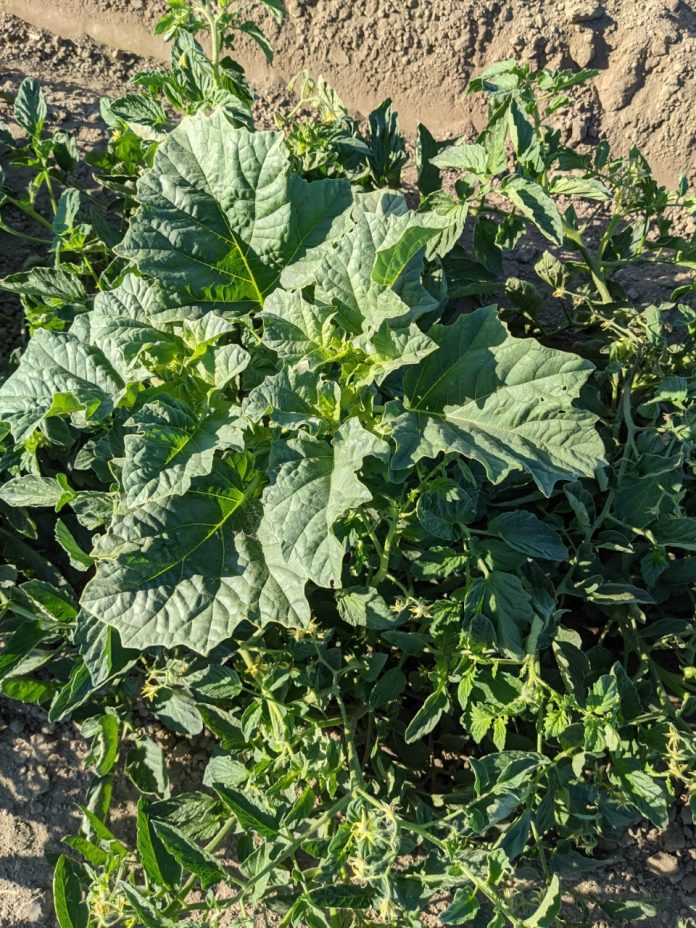

Controlling weeds in processing tomato fields is vital to achieving good yields. Effective weed management involves crop rotation, field preparation, sanitation, irrigation management and use of effective herbicides.
In a UCCE webinar on IPM in vegetable crops, Farm Advisor Amber Vinchesi-Vahl also stressed the importance of several cultural practices, including field sanitation to prevent the spread of weeds and disease pathogens in fields.
Identification of weeds is necessary for weed management in tomatoes because it influences management decisions. UC IPM guidelines suggest twice-a-year weed surveys in each field after the crop is planted but before weeding and just before harvest.
Common weeds found in Sacramento Valley processing tomato fields are field bindweed, nightshades, nutsedge and broomrape. Broomrape, a root parasite, is a growing problem in California processing tomato production. At high densities, this weed can greatly reduce yields or result in crop failure. Branched broomrape is an “A-list” noxious weed by CDFA. Discovery of broomrape in a California tomato field leads to quarantine and crop destruction without harvest, resulting in significant economic loss to growers. Vinchesi-Vahl said the short-term goal with this weed is to minimize spread to other fields.
Crop rotations change the environment in a field, reducing weed pressure. Rotations into alfalfa, corn, wheat, cotton or rice are recommended. Rotation into potatoes, peppers or eggplant crops is not recommended. Other options for weed control in processing tomatoes include field sanitation, pre irrigation to germinate weed seeds, herbicide use and fumigation. Shifting planting dates to allow for weed germination is also helpful.
Although the use of transplants gives tomatoes a head start on weeds, pressure can mount during the growing season. Preventing weeds from going to seed, keeping canal banks free of weeds and avoiding moving weed seeds into fields on equipment can reduce weed pressure. Keeping bed tops dry with drip irrigation or using alternate furrow irrigation to prevent overly wet conditions are also good practices.
Vinchesi-Vahl said two in-row cultivator trials have been done to evaluate weed control, costs and time using mechanical cultivators. The trials in Colusa and Merced counties sought to compare in-row mechanical and robotic weeders to grower-standard practice and post-emergence herbicides. The Robovator, a robotic tool with automatic camera vision, provided good weed control, but also caused crop damage in the 2020 and 2021 trials. The finger weeder provided excellent weed control in 2020 and moderate control in 2021.




















